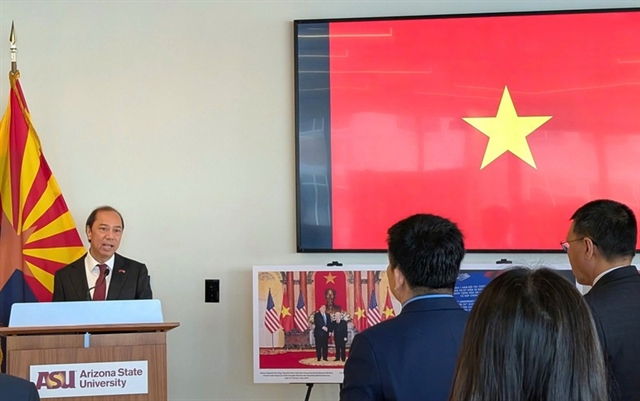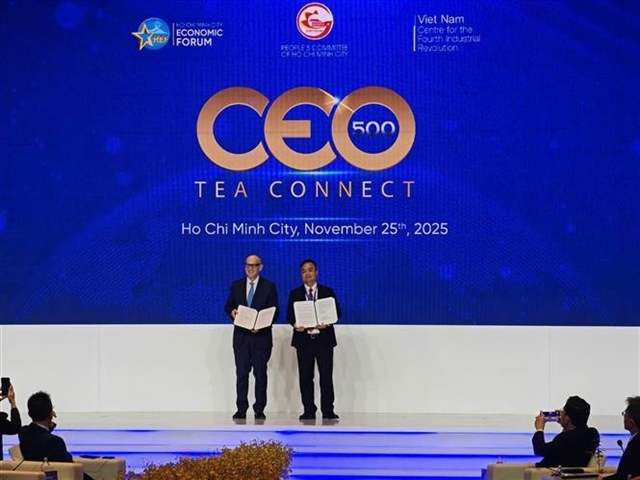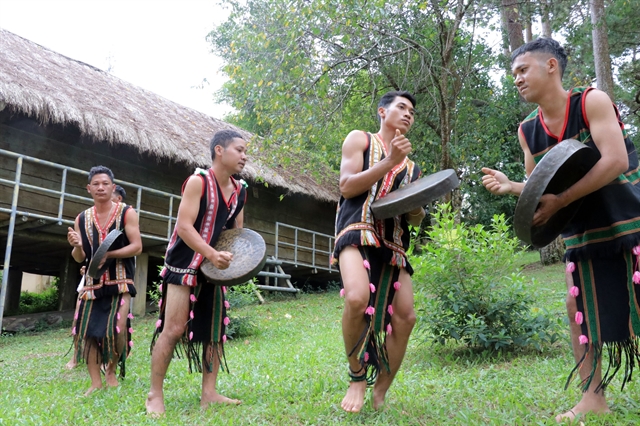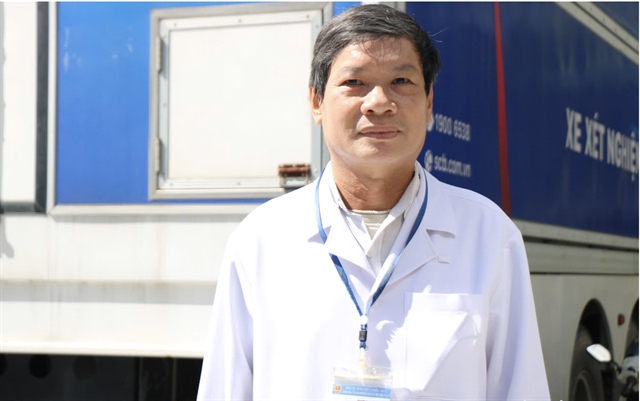 Society
Society
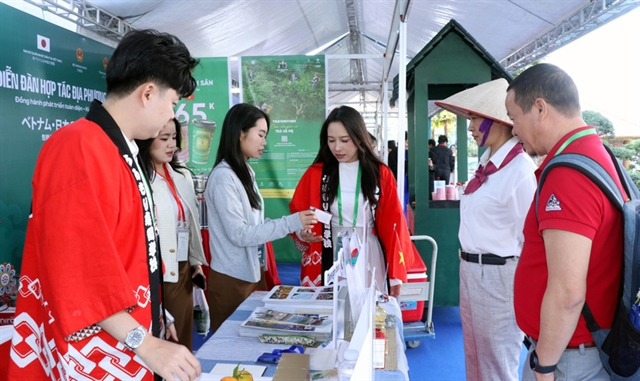
With a pick on his shoulder, Đinh Văn Vật, 71, strolled towards the
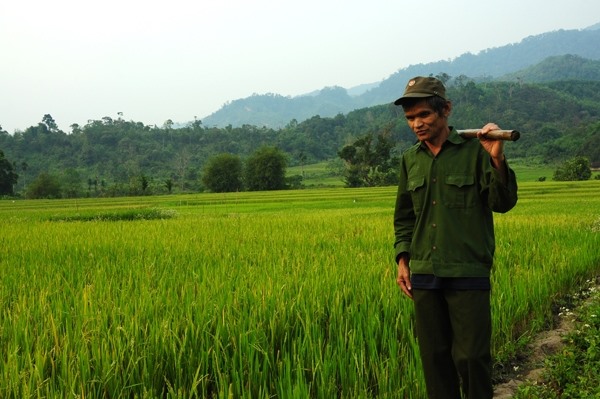 |
| Đinh Văn Vật visits his rice field. — Photo baogiaothong.vn |
QUẢNG NGÃI — With a pick on his shoulder, Đinh Văn Vật, 71, strolled towards the
Although he’s blind, Vật is still well-informed on every aspect of his life in his hometown of Mang He Village, Sơn Bua Commune, Sơn Tây District in the central
With 44 years living in dark, Vật’s senses have become strong enough to perceive everything and assist him in all the work he needs to do in his daily life.
When Vật was 20 years old, his eyes were bright, so he volunteered to join the resistance war, like other men belonging to the Ca Dong ethnic group. He prevailed in many violent struggles.
In 1973, when he was marching, he was hit by poisonous chemical substances and tear gas and his eyes gradually drew dimmer until he was totally blind.
When the resistance war ended, Vật returned to his hometown with the sadness of a blind man.
Not wanting to be a burden, he tried to work. Once, he fell down on a rocky road. In a moment that was surely destiny, a girl named Đinh Thị Dết helped him — and then they got married.
Since then, Vật became determined to practice walking and working. And he asked his wife to lead him to the
Many times, he accidentally dug on his foot, or fell into the river, but he was not discouraged.
“Then I sold rice and bought buffaloes. I used to have 30 buffaloes. In many local meetings, people call me ‘king of rice’ because no one in the district has as much rice as me,” he told Tuổi Trẻ (Youth) newspaper.
Support the poor
Members of the Ca Dong minority group in the district not only admire Vật for his determination, but also for his kindness.
In the period of 1980-90, escaping poverty was an obsession for local people.
One day, Vật asked his wife, Dết, why children cried a lot at night. His wife told him that all of the villagers were hungry due to the rice shortage.
Vật immediately told his wife to cook soup for local children and deliver rice to other people in his village.
“All of the people in the village ate my rice for half a month, and then support rice was brought into my locality,” said Vật.
Now poverty is not severe in the village, and Ca Dong people know how to enrich themselves. But when they remember the difficult days, many people are grateful to Vật.
Đinh Thanh Dứa, former secretary of the Sơn Bua Commune Party Committee, said that when local people were living in poverty, dozens of households were helped by Vật.
Over dozens of years, Vật’s rice store helped many people to overcome needy circumstances, said Dứa.
The most daring decision from Vật was not delivering rice to poor people, but presenting land to the poorest people in the village so that they could earn their living.
So far, more than 50 poor people in the commune have received land from Vật.
Đinh Văn Tin received rice from Vật many times. Later on, he was presented with 1,000sq.m of field from Vật. He then overcame poverty.
“My family owes Vật a debt of gratitude. Now we do not worry about poverty, so whenever Vật suggests I help others, I’m willing to do so,” said Tin.
Đinh Văn Tôn, secretary of the Sơn Bua Commune Party Committee, said that the Sơn Bua Commune was founded in 1999. He worked as deputy chairman of the commune people’s committee.
“I’m a leader, but still lack rice for daily meal. Vật presented me with more than 2,000sq.m of field, then my family had enough rice. I’m obligated to Vật for my life,” said Tôn.
Every people in Sơn Tây District talk about Vật as a good example for how determination can enable people to overcome difficulties and obstacles in life. — VNS

